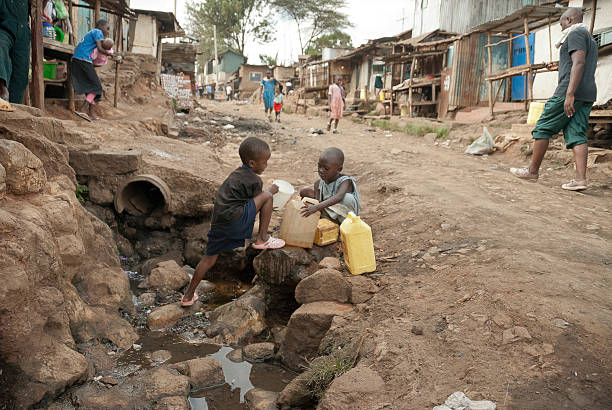The National Bureau of Statistics (NBS) recently released the highly anticipated multidimensional poverty report. The report put Nigeria’s poverty index at 0.257, with about 133 million people being multidimensionally poor.
Sokoto, Bayelsa, and Jigawa States led the list of states in Nigeria with the highest multidimensional poverty index, having an aggregate of 14.18 million impoverished people.
Factors such as healthcare, food insecurity, education, nutrition, and access to cooking fuel contributed the most to the national poverty index. According to the NBS, over half of the Nigerian populace is multidimensionally poor and deprived of cooking fuel.
The highlights: 65% of the poor people in Nigeria, which translates to 86 million live in the Northern part of the country, while 35% (47 million) live in the southern part.
- The number of poor people living in rural areas is estimated at 105.98 million, with a multidimensional poverty index of 0.302, while 26.94 million people are poor in urban areas, printing an MPI of 0.155.
- Further breakdown of the data showed that the North-West zone has the highest number of poor people with a 45.49 million impoverished population, with an MPI of 0.324. On the other hand, the South-Eastern region recorded the lowest number of poor people with an estimate of 10.85 million and an MPI of 0.183.
- Meanwhile, the South-West region recorded the lowest MPI rate at 0.151, followed by South-East and South-South with 0.183 and 0.25 respectively.
- Furthermore, nutritional deprivations contributed the most to the MPI of the North-West region food insecurity contributed the most in the South. Unemployment contributed the most in the South-South region, while security shocks affected the MPI in South-South, North Central, and North East.
Poorest Nigerian states: Sokoto State led the list of states with the highest multidimensional poverty index with 0.409 and 5.81 million poor people.
- The state was followed closely by Bayelsa State with an index of 0.401 and 2.61 million poor people.
- Third on the list is Jigawa State with an MPI of 0.385 and 5.76 million people. Others on the list with the worst poverty index include Kebbi (0.385), Gombe (0.38), Yobe (0.37), and Plateau (0.365).
- On the flip side, Ondo State recorded the lowest MPI at 0.095 with only 1.3 million multidimensionally poor people. Lagos and Abia States followed with 0.101, respectively.
- Meanwhile, they differ in the number of poor people. Specifically, Abia has 0.12 million poor people, while Lagos State has 4.22 million people.
World Bank prediction: The number of poor people according to the World Bank estimate as of 2020 was 89 million, representing 42% of the population, which rose from 40.1% in 2018/2019 as a result of the covid-19 pandemic.
- However, the World Bank projects that the number of poor people in the country based on living standard could hit 95.1 million by the end of 2022, on the back of the rising cost of living bedeviled by a 17-year high inflation rate, layoffs of staff, and general economic downturn.
- Nigeria has been grappling with the high cost of living, which has further widened the gap between the rich and the poor, seeing many more Nigerians fall below the poverty line.
- The CBN raised the monetary policy rate three times this year in a bid to curb the surging inflation rate, however, prices have remained elevated still.
While the World Bank projection seeks to estimate the number of people based on living standards, the recent report by the NBS measures the share of possible deprivations that poor people experience, which ranges between 0 and 1.
